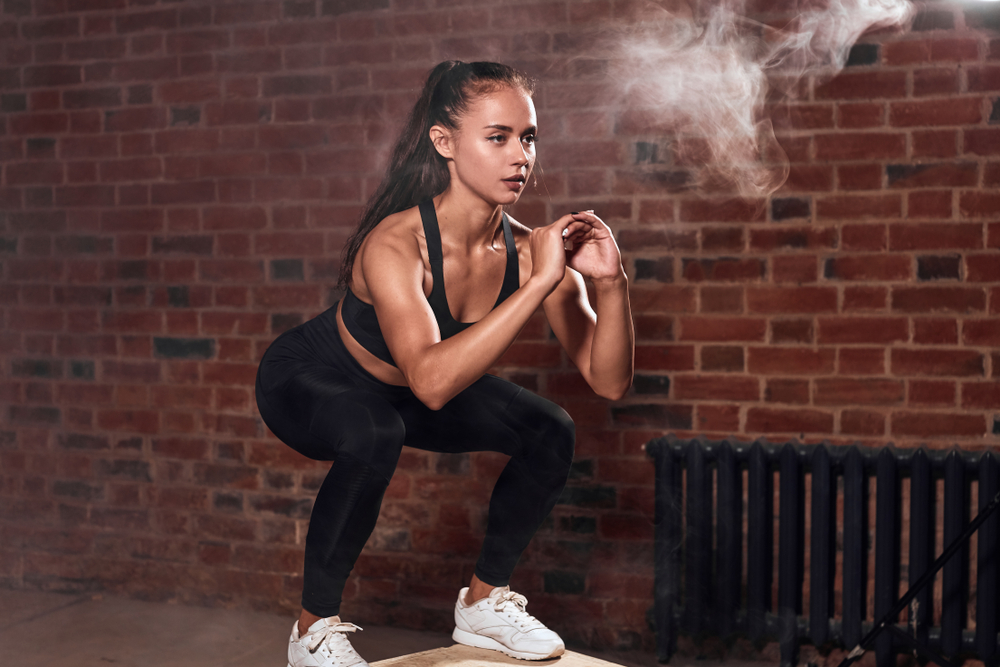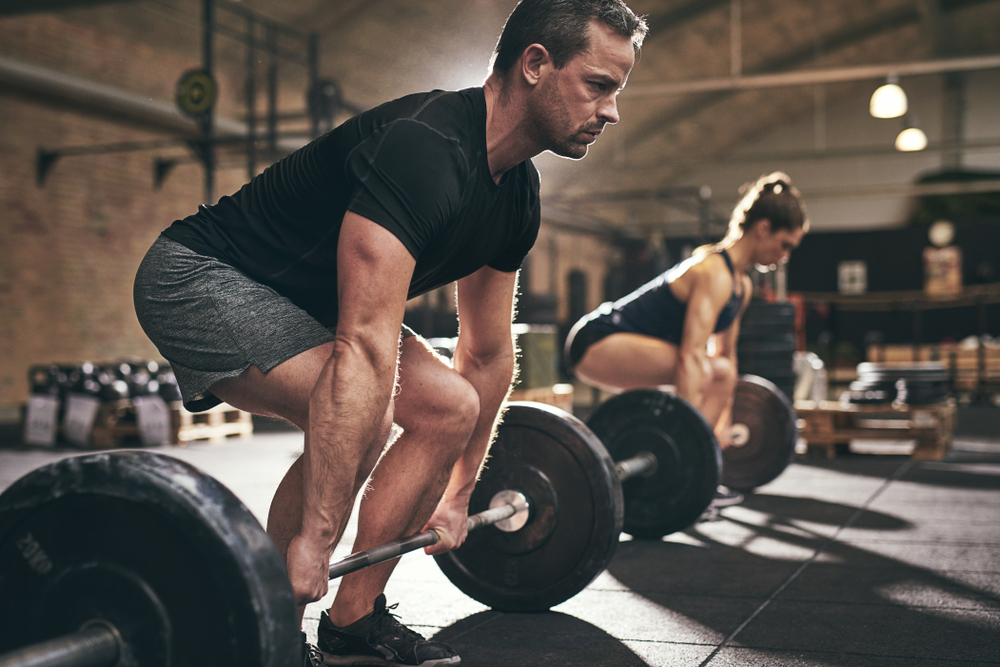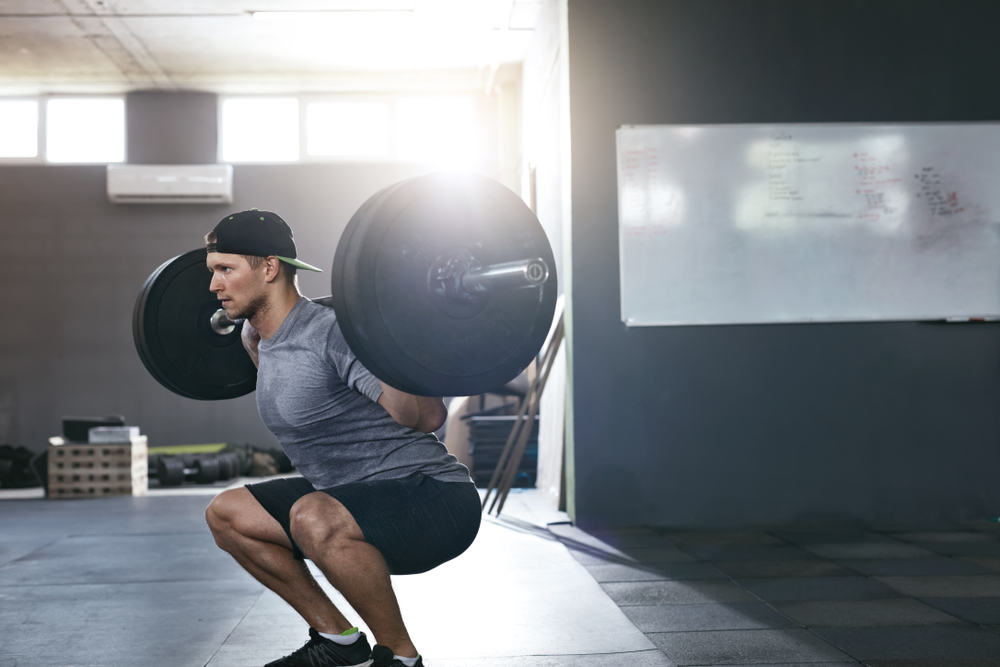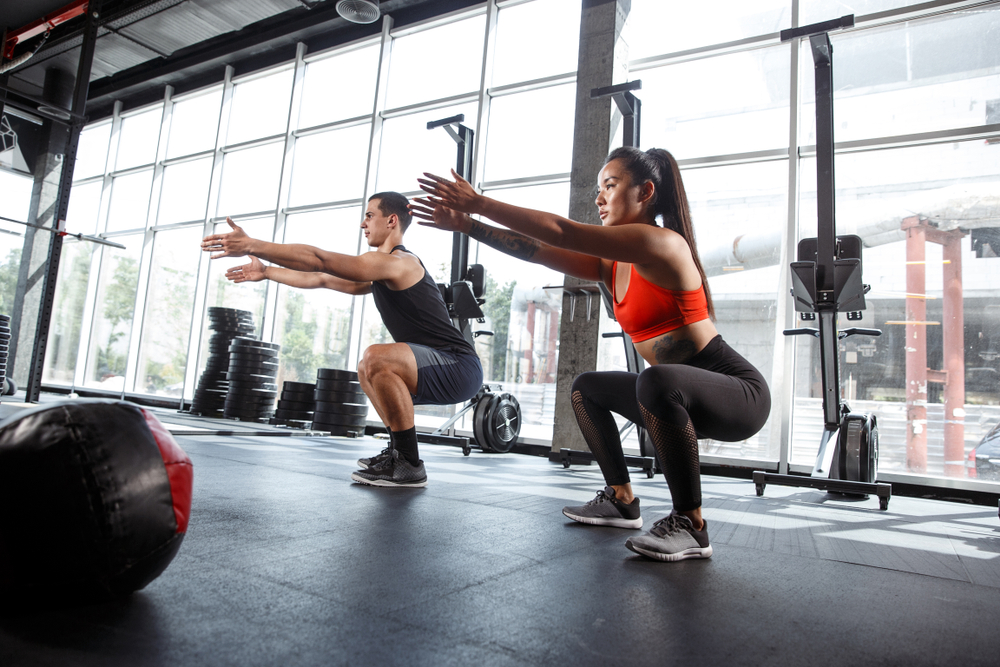You never considered the possibility until someone uttered it under their breath one day. “Squatting makes you shorter.” It sounded ludicrous, but the more they explained the more it made sense. Squatting requires you to put a heavy weight on your shoulders. This pushes down your shoulders and puts weight on the spine. It only makes sense that the spine would shrink from this continual loading. Could it be true? Does squatting really make you shorter?
Squatting does not make you shorter. Some exercises, including squats, place an external load on the spine causing spinal compression. This might cause the vertebrae to compress as much as 5 mm. However, this compression is temporary and corrects after a good night’s sleep. There is no evidence that suggests squatting will make you shorter or stunt your growth.
Squats are one of the best exercises you can do in the gym, so how did this crazy rumor get started? Read on to find out!
Contents
- Does Weightlifting Make You Shorter?
- Does Deadlift Make You Shorter?
- Does Squatting Make You Shorter or Taller?
- Which Exercise Makes You Shorter?
- Does Squatting Make Your Legs Bigger?
- Does Doing Squats Make Your Butt Bigger?
- Can Squats Make You Faster?
- Benefits of Squatting
- Drawbacks of Squatting
- Growth Plates and Squatting
Does Weightlifting Make You Shorter?
Technically speaking, yes. Weightlifting can make you shorter. However, the effects are negligible and temporary, often reversing after one good night’s sleep.
Essentially, the change in height comes from compressing the spine during axial loading. We use weight to train our bodies and get stronger. However, the impact of the weight on our spine causes them to compress marginally, resulting in a loss of height.
Lifts that might make you shorter temporarily include:
- Deadlifts
- Cleans and snatches
- Overhead presses
- Hack squat machine
- Weighted lunges
- Biceps curls
The loss of height is generally between 3 and 5 mm, which is barely detectable by the human eye. After a night of rest, the spine returns to normal, and you wake up with minimal or no compression remaining.
Does Deadlift Make You Shorter?
By the same principles that affect your spine during heavy squats, deadlifts will also make you shorter temporarily.
In terms of affecting your permanent height or stunting growth, deadlifts do not make you shorter.
The temporary change is fairly negligible and often undetectable by the human eye. Keep in mind, however, that deadlifts target your lower back muscles. With strong lower back muscles and a solid core, our posture improves. That means you’ll stand a little taller and sit up a little higher as well.
Deadlifts may leave you subject to spinal compression, but they also add height by improving posture. Overall, none of these effects are substantial or permanent.
Does Squatting Make You Shorter or Taller?
Squatting will make you temporarily shorter due to axial loading and spinal compression. However, the effects will reverse within a short period of time.
The hullabaloo started in the 1960’s when a group of Japanese scientists theorized that manual labor was affecting the growth of children. They hypothesized that excessive lifting of heavy objects would stunt their growth by damaging growth plates.
Growth plates are at the crux of this conundrum. They are cartilage at the end of certain bones and remain soft while we are growing. Once we reach our full adult height and puberty ends, the cartilage hardens into solid bone.
Circling back to our studious scientist buddies in Japan, they believed that excessive external loading would damage growth plates in the children. If this was truly happening, then it would stand to reason that the children were stunting their growth.
Unfortunately, the scientists made a correlation to the short stature of the children and the external loading. This by no means proved the hypothesis, but none of that mattered. People began popularizing the myth and began believing it, even though it was not true.
It took decades before new studies could definitively establish that external loading will not permanently affect height or stunt growth.
Which Exercise Makes You Shorter?
Let’s be clear before we go on.
Exercise does not stunt growth or make you shorter.
Yes, you will temporarily experience marginal height loss from spinal compression. Any exercise that pushes down on your spine by racking a barbell on your shoulders will do this. Lifts that require you to lurch forward and hold a barbell as well may affect the spine too.
These exercises are:
- Deadlifts
- Cleans and snatches
- Overhead presses
- Hack squat machine
- Weighted lunges
- Biceps curls
Studies determine that the use of a weightlifting belt will mitigate the effect of spinal compression, reducing it by approximately 1 mm.
Keep in mind, however, that 1 mm is minute, and even a full 5 mm height reduction will be hardly noticeable. Did we mention the height reduction is temporary too?
Does Squatting Make Your Legs Bigger?
Squatting will absolutely make your legs bigger, specifically your thighs.
When we squat, we descend with heavy weight on our shoulders before pushing up to return to a standing position. This employs many of the muscles in our legs to work hard, but none more than the thighs.
Our quadriceps are most responsible for pushing back against the weight load and getting us upright again. As we train, our quads will grow. That’s why bodybuilders and professional athletes that regularly squat often have bulging thighs.
Back squats, front squats, hack squats, lunges, and leg presses all contribute to bigger quadriceps.
In addition to our quadriceps, squats help work out the hips, hamstrings, calves, and glutes. Most muscles in the leg will be employed in some capacity during a squat.
Overall, it’s one of the best things you can do on leg day.
Does Doing Squats Make Your Butt Bigger?
Squats are excellent for working out your glutes, which will give you a bigger butt.
Our butts are made up of a few muscles, namely the gluteus minimus, gluteus medius, and gluteus maximus. Thus, we call them the glutes!
When squatting, our glutes assist the quadriceps and other adjacent muscle groups in managing the weight. We keep a heavy barbell steady on the descent and push it right back up upon standing.
The movement and resistance from the barbell taxes our muscle groups, resulting in microtears. When we recover from these microtears, we experience hypertrophy and the muscles get larger. Therefore, your butt muscles will become larger from squatting and other exercises that use the glutes.
Can Squats Make You Faster?
Squats can make you faster, making them crucial for runners.
If you’re a runner, you may be moaning and groaning right now. Runners love to run but often cringe at the sight of a barbell. Time spent in the gym not running almost seems counterintuitive.
However, the two go hand in hand. Running regularly is a great way to become a better runner but engaging in regular weight training that supplements your running is also integral. This can include some upper body work, core exercise, and lower body exercises including squats.
Squats strengthen the quadriceps and the glutes, both imperative during your stride. This helps your body move more explosively on flat terrain. It also helps assist in uphill climbs so you can power up those inclines.
A set of strong legs also will help you lengthen your stride, so you cover more ground with less effort. This will allow you to sustain your pace for longer while also running more explosively.
It’s a win-win-win scenario.
Benefits of Squatting
Squats are often misunderstood and neglected.
Weightlifters loathe leg day and often sub it out for another day bench pressing. Runners prefer sticking to cardio and stay away from barbells in general.
Unfortunately, failing to squat regularly is only doing yourself a disservice, as it’s irrefutably one of the best things you could be doing in the gym. Period.
Benefits of squatting include stronger:
- Core
- Glutes
- Quads
- Calves
- Tendons
- Ligaments
- Bones
- Hamstrings
- Hips
- Improved hip mobility
You get stronger muscles, as well as stronger support to the muscles in the leg. You’ll enjoy a stronger posture, bigger, stronger legs, and better overall health.
Let’s not forget that squatting heavy weight is an absolute calorie blaster. While most folks looking to lose weight endeavor to grind it out on a treadmill, squats can help. Including a set of squats once or twice a week will work wonders for your waistline.
It’s an overall great exercise.
Drawbacks of Squatting
Squats are not without fault, however.
When squatting a barbell, especially at heavier weights, good form is crucial. Common mistakes include squatting with a rounded back, leaning too far forward, or keeping your weight on your toes instead of the heels.
All of these mistakes might leave your back sore or cause serious damage. Good form requires you to keep your weight on your heels, not your toes. Your back should remain flat, and your eyes should look straight forward and not down at your feet.
Squatting too heavy could be dangerous as well, as you might get stuck at the bottom of the lift.
If this happens to you and you are conscious, you can bail the barbell by simply spilling it from your shoulders backwards. It will be loud and may offend other gym goers depending on where you are. However, a big clang is better than possibly getting yourself hurt.
Overexertion during a lift could cause you to temporarily black out. This is rare, but it can happen. Remember to breathe during your lift to prevent this from occurring. Using a spotter or a squat rack with guards will help protect you if this rare phenomenon happens to you.
Growth Plates and Squatting
Growth plates are the cartilage at the ends of our bones while we are growing.
The whole myth that squats stunt your growth came about when scientists failed to establish causation between external loading and growth plate damage. They did, however, establish a correlation, which was enough for the myth to be widely circulated.
Squatting does not affect growth plates or stunt growth unless there is a catastrophic event.
For example, fracturing a growth plate from a fall, damage, or other accident may affect normal growth unless the fracture is treated properly. Use of a cast or splint is common for growth plate fractures. Provided the fracture is identified and treated under a doctor’s supervision, there will likely be minimal or no effect on growth.
In regard to how this relates to weightlifting, an accident would need to occur for squatting to cause a growth plate fracture. More likely, the benefits of squatting would help protect a young individual from this kind of fracture.
Squatting not only helps improve the strength of the leg, its muscles, bones, ligaments, and tendons, but physical activity in general helps. Studies show that physical activity in children prior to the puberty growth spurt inspires greater bone growth during the spurt. Less physically active children, by contrast, experienced statistically less growth during the trademark growth spurt during puberty.
Therefore, it’s more likely that squatting will protect a child’s normal growth rather than hinder it.





